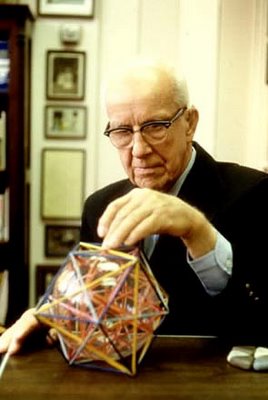
As the Football fever takes hold of the globe, this is the right time for me to tell what a football has to do with Chemistry. (May Pele forgive me!)
There are molecules composed entirely of carbon. One such molecule, gets its name from Richard Buckminster Fuller, a renowned architect who designed the geodesic dome.
Since this type of molecule has a shape similar to that of a geodesic dome, it is also known as Buckminsterfullerene!
But where does our truncated icosahedron (nothing but the lump that the likes of Ronaldinhos and Beckhams will be rocketing into the nets soon!)come into this?
Well! The smallest fullerene has the shape of a football of the type made of hexagons and pentagons, with a carbon atom at the corners of each hexagon and a bond along each edge. Technically, it is called C 60.

Discovered by Sir Harold Kroto, Richard E. Smalley, and Robert F.Curl (they were the recipients of the 1996 Nobel prize in Chemistry), Buckminsterfullerene's atoms are bonded together into a hollow polygon structure with 60 vertices and 32 faces, 12 of them being pentagons and 20 hexagons. Thus, the molecule has the same geometry as that of a football.

Also nicknamed 'Buckyballs', these molecular footballs have led to new branch of Chemistry.

